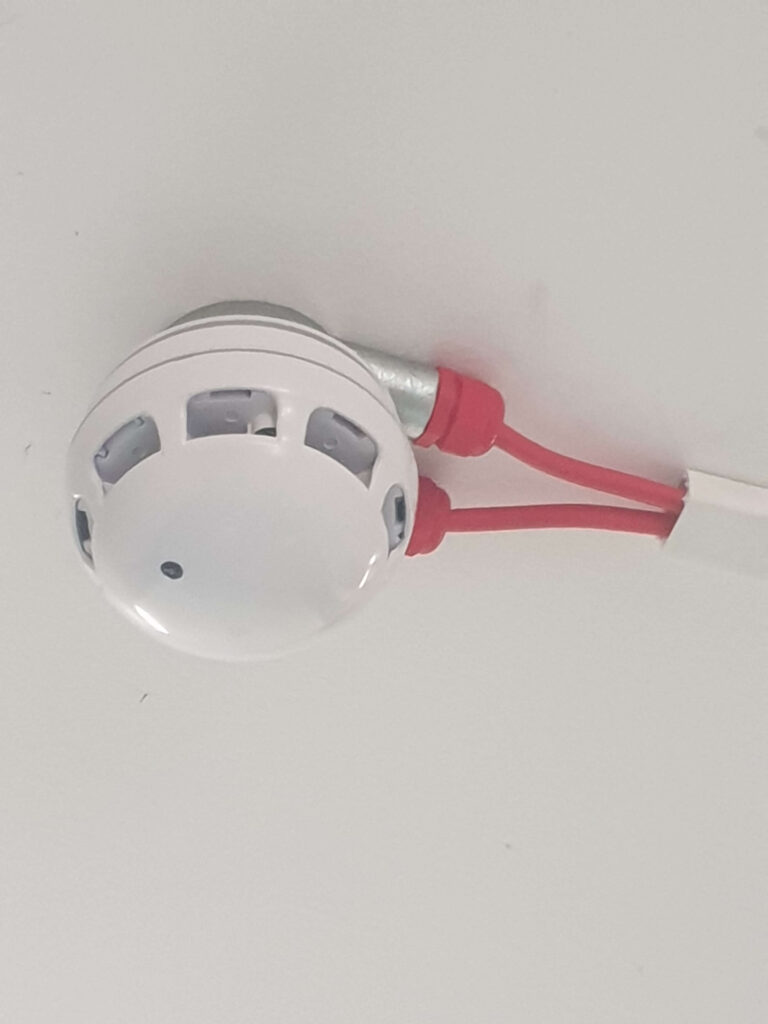Ensuring the cable used for fire alarms is supported properly by the 18th edition guidelines is crucial. Don’t take any chances when it comes to fire safety, make sure you follow the recommended cable support procedures.
This article will cover the guidelines you are expected to follow for all types of cabling, including fire alarm cables. It is important to note that any cables that are installed in an escape route or any part of a building must adhere to these standards.

The 18th Edition of the IET Wiring Regulations 2019 (BS7671) was implemented on 1st January 2019, bringing about significant changes directly related to fire safety and the performance of electrical installations in the event of a fire.
The amendments made to the regulations have been influenced by tragic events such as the Grenfell Tower disaster and other fires that occurred in high-rise tower blocks. As a result, contractors need to comprehend how these changes impact the industry, learn how to handle them, ensure that installations fulfil or exceed the required standards, and stay within budget while ensuring the safety of both people and buildings.
Construction site managers and those responsible for cable fixing and health and safety on construction sites should pay particular attention to these modifications. Adhering to these rules can reduce the potential harm that fire could cause, especially given the rising popularity of high-rise developments. Additionally, proper cable installation and management can aid first responders and prevent the loss of life.
The Grenfell Tower fire highlighted several issues with building materials and installations, not just the flammable cladding. In addition to the cladding problem, it became clear that many electrical cable clips and fittings failed to perform as intended. These failures were a major contributing factor to the disaster and should not have happened.
Fatalities resulting from falling cables in a burning building were documented in a Department for Communities and Local Government journal article.
- Harrow Court, Hertfordshire, 2nd February 2005
- Three individuals lost their lives in a high-rise flat fire, including two firefighters who were trapped by fallen fire alarm cables.
- Atherstone-on-Stour, Warwickshire, 2nd November 2007
- Four firefighters died in a large, highly-insulated warehouse fire.
- Shirley Towers, Hampshire, 6th April 2010.
- 2 firefighters died in a high-rise fire, trapped by fallen cables before rapid fire development.
Premature collapse of cabling in escape routes and other parts of a building during a fire is a serious hazard. It can obstruct stairwells, doorways, and escape routes, making it difficult for people to evacuate. In addition, burning cables can release harmful fumes that can be dangerous to inhale, and falling cables can increase the risk of electrocution and entanglement. Therefore, it is crucial to ensure that cabling is properly installed and maintained to prevent such hazards in case of a fire.
Let’s take a look at the recommendations laid out in the 18th Edition of the IET Wiring Regulations 2019 (BS7671).
- 18th Edition wiring regulation recommends that cable supports are typically made of non-aluminium and can withstand temperatures of up to 500°C (Please note the fire-rated clips have different requirements).
- Metal support clips are now mandated, along with considerations for clip spacing, cable fireproofing, and cable armour. Non-plastic supports are now required for all wiring in any installation.
- Fire-resistant cables supporting safety-critical services must last for a minimum of 120 minutes when exposed to heat and flames. This must be done without compromising the circuits that power essential services during a fire.
- Use trays, baskets and metal cable ties to support larger cables and cable bundles. This will prevent collapse and obstruction during a fire, particularly near entryways and exits.
- Don’t rely solely on plastic ties to secure cables; use fire-resistant fixings as well. Plastic clips and supports, as well as aluminium clips, ties, and supports, are now non-compliant due to the low melting point of aluminium.
- All cables throughout the installation, not just in escape routes, must be secured with fire-resistant cable restraints made of materials like steel, copper, or cast iron.
- The spacing between clips should not exceed approximately 250mm–400mm unless the cable is protected by substantial metal trunking or other supports.
- Cable supports must be securely attached to the building structure to prevent failure during a fire.
- Gas nailing, metal fixings, and metal plugs are permitted depending on the surface.
“Take the Initiative for Fire Alarm Safety! Ensure Compliance with BS 7671 and BS 5839.
Don’t leave anything to chance when it comes to fire alarm installations. Compliance with both BS 7671 and BS 5839 is non-negotiable for safeguarding lives and property.
If you’re unsure about the requirements or aiming to enhance your expertise, we have the perfect solution for you. Enrol in the Cube BS5839:2017 Part 1 course today and gain an Ofqual-approved qualification in fire alarm installation. It’s your chance to be a certified professional in this field. Act now, and let’s make fire safety a top priority together!”
For course information and starting dates, contact our advisors. Cube offers Ofqual-approved qualifications in fire and security. Click here to contact us
Article by Ferdinand Joseph. MSc, BSc (Hons) – Senior Fire and Security Consultant
